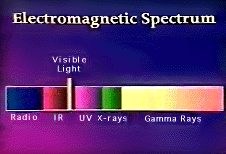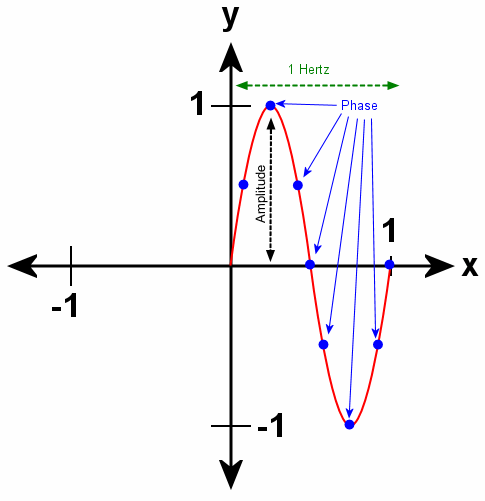Without actually going into the physics of particle or wave theory, nearly all signals used for communication are part of the electromagnetic spectrum and those that are not are based on kinetic energy (such as sound).

All energy in the universe travels in waves and those waves radiate outwards from a source, just as waves ripple outwards from a stone tossed in a pond.

All radiation is said to have wavelength, amplitude, frequency, phase, and power. Everything from gamma rays all the way down through the visible light spectrum to radio waves are all electromagnetic energy and differ primarilly in frequency.
The wavelength of electromagnetic energy is measured in distance (meters), its frequency is measured in time (cycles per second) as is its phase (what value the wave has at any single instant in time), and amplitude is measured in power (electron volts).
Electromagnetic waves are frequently represented mathematically using a sine wave on a cartesian graph (graph with the red wavy line below). A sine wave begins with a high value at the origin (where the X and sin X cross in the graph below), rises, falls and then returns the X axis. This single sine cycle is said to pass through 360 degrees of phase. When represented on a polar-rectal graph, you get a circle (360 degrees). In polar rectal coordinates, the values are a distance from the origin plus an angle from 0 degrees.
| POLAR | CARTESIAN |
 |
|
Below is a graph that illustrates a specific freqency at 1 hertz. It shows it's amplitude, its frequecy (1 hertz per second) and its phase value at several points in time between zero seconds and 1 second.
